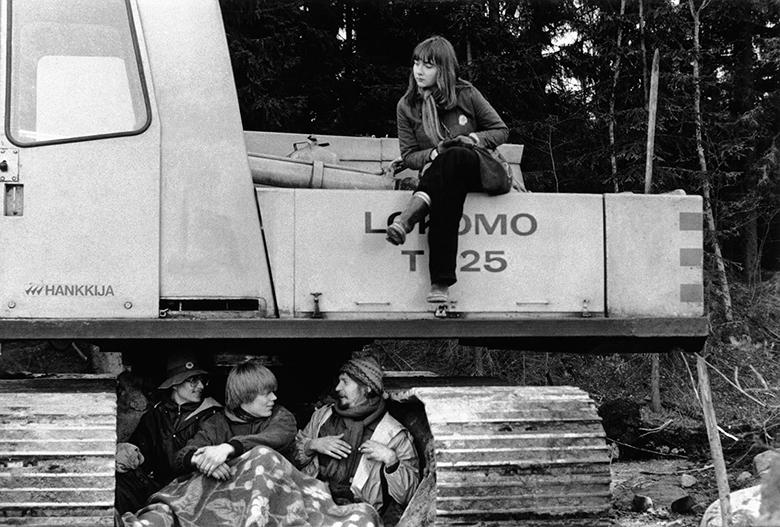The civil society of postmodern Finland (1980–2000)
In the postmodern Finland, the civil society disintegrated.
The next transitional period of civil society was in the 1980s. The Western ideal of individualism inspired Finnish people as well. The nation of corporations and systems of organizations began to transform itself into individualistic Finland.
Politics gave way to leisure and lifestyle
The relative status of organizational activities in trade unions and political parties began to go into decline from the end of the 1970s onwards. Trade union memberships remained high because of the earnings-related unemployment benefits, but the workers’ enthusiasm in local trade unions faded. The same happened in political parties.
People’s interests were now directed more towards hobbies, sports and exercise, culture, and environmental organizations. This was visible in the rapid increase in the number of leisure and lifestyle associations. Hence the total volume of civic activities remained the same, or even grew, despite the dramatic change in emphasis between different groups of organizations at the end of the twentieth century.
Small movements raised big attention
Civic and organizational activities disintegrated when most of the traditional, large organizations begun to lose members, while small new associations with very specific agendas were formed. The traditional strong bond between organizations and political movements weakened at the same time. The key trend of civic activities was division.
New organizations and movements have widened the scope of civic activities in the last decades and years. Nature conservation and the environmental movement gave birth to the green movement, after which Finland has experienced squatters since 1979, the animal rights activism of the 1990s, and the arrival of the new international movements (for example, the anti-globalization movement) at the end of the twentieth century and at the beginning of the twenty-first century.
Nature conversation and the environmental movement gave birth to the green movement.
These movements were small in volume, but they assumed a social significance of an extent which is many times out of proportion to their size. In this sense the phenomenon was similar to that of the early 1960s when the associations of young radicals became the object of media publicity with their initiatives.
The new movements and organizations introduced new viewpoints and working methods to the field of civic activities, for example, a much stronger international dimension and the concept of spontaneous action which does not necessarily even aspire to stability or permanence.

Non-institutional civic activities remained rare
Non-institutional civic activities, not based on associations, were still rare. The reason was the politicised nature of civic activities and their close connections with the state, the limited societal discourse and the traditionally strong position of authorities.
Even spontaneous civic activities and the radical protest movements were quick to get organized. At the same time the associations efficiently transformed even radical movements into peaceful actors within the organized domain of civic activities.
The recession of 1990s gave birth to new cooperations
Linked to the transition at the turn of the millennium, was also the foundation of new small-scale cooperations. Finland underwent a severe economic recession at the beginning of the 1990s. Some of those who lost their jobs, employed themselves by setting up their own cooperative enterprises.
Emphasis shifted from societal themes to issues touching upon one’s own circle of life.
Cooperation was also the chosen model of business to the alternative lifestyle people who sold organically farmed products, alternative treatments, or set up new kinds of living communities.
People’s growing interest in their own lives had an influence on non-formal adult education, too. Emphasis shifted from societal themes to issues touching upon one’s own circle of life instead of the societal themes. People were studying languages, focusing on their interests and looking after their mental and physical health.
Article is based on the text “The civil society of post modern Finland” by Aaro Harju, published earlier on this web site.